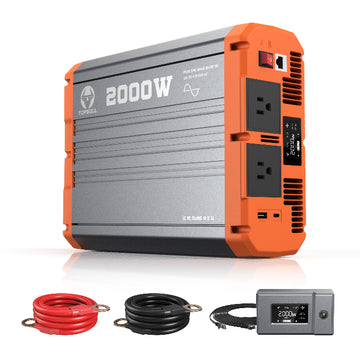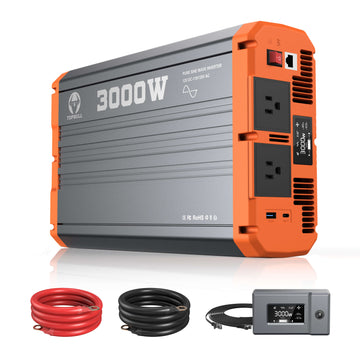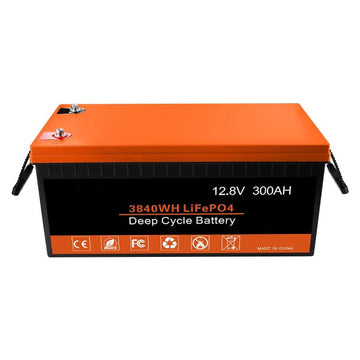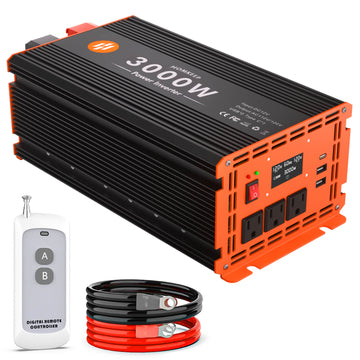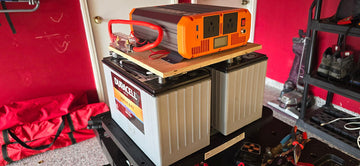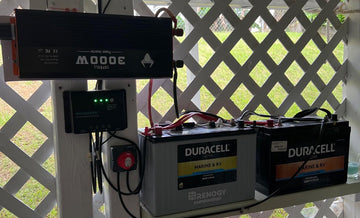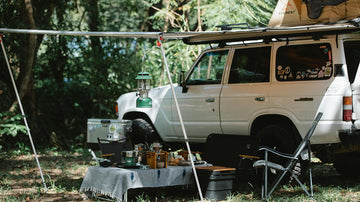The efficiency of solar panels can be affected by the amount of sunlight they receive. If you're considering investing in a solar energy system, you may want to know if there's enough sunlight where the house is located. But it's not enough to know the total number of hours of daylight; you need to know the peak hours of sunlight in your area. In the US, sunlight conditions can vary significantly from state to state, and even from zip code to zip code, which directly impacts the efficiency and profitability of your solar energy system.
Let's take a closer look at peak sun hours to see if you can make the most of the solar energy available to you.
Defining peak sun hours
During the day, sun hours cover the entire period from sunrise to sunset, but the intensity of the sun's rays varies greatly during this time. Peak sun hours, on the other hand, are the times when sunlight is strong enough to produce the maximum amount of solar energy, and are usually considered to be the times when the sun's elevation angle is greatest and the intensity of light is strongest, occurring when the sun is at its highest position in the sky.
One peak sun hour is equivalent to 1,000 watts of solar energy per square meter, so if the total radiation from the sun over a day is equivalent to 1,000 watts per square meter for one hour, then the standard peak sun hour for that day is one hour. The more peak hours of sunlight you have in your location, the more electricity your solar panels will produce.
Factors affecting peak sun hours
Here are some of the factors that affect peak sun hours:
Geographical location
- Latitude: Latitude determines the angle of the sun in the sky, which in turn affects the intensity and duration of sunshine. Areas closer to the equator tend to have more hours of peak sunshine. As latitude increases, the angle at which the sun hits the Earth becomes less direct. This reduces the number of peak sun hours.
- Altitude: Altitude affects the absorption and scattering of sunlight by the atmosphere, which in turn affects the intensity of sunlight.
Sun angle.
Global rotation changes the angle at which sunlight hits the Earth's surface during the day. This angle also varies according to your geographical location and the time of year. Sunlight is strongest when the sun is directly overhead (usually around midday), so energy production is higher then!
Seasons
The tilt of the Earth's axis means that the angle of the sun changes constantly throughout the seasons. Therefore, the time of peak sunlight will vary from month to month throughout the year.
Weather conditions
Solar panels produce more energy when the weather is clear. Heavy cloud cover reduces the penetration of sunlight and affects the intensity of sunshine. Precipitation reduces the intensity of sunlight and the length of peak sunlight hours.
Atmospheric conditions
Refraction in the atmosphere can deflect the path of the sun's rays, affecting the intensity and direction of sunlight.
Topography and environment
- Shadow and shade: Shade from buildings, trees, or other objects reduces the arrival of sunlight and affects the length of peak daylight hours.
- Topography: Mountains or undulating terrain can affect the distribution and intensity of sunlight.
Why are peak sun hours so important?
Size the solar system you need
Calculate the size of the solar system needed to meet your energy needs based on peak sun hours. Make the most of peak sun hours to maximize energy collection and reduce reliance on the grid.
Let's say your home uses 10,000kWh of electricity per year. the peak sun hours in your area is 6.
Average electricity use per day: 10,000/365 = 27.4kWh
27.4kWh per day / 6 hours of peak sunshine = 4.6kWh.
This means you need a solar system that can provide 4.6kWh of electricity.
📕Read more about solar panel sizes, specifications, and wattage.
Estimating energy output
Knowing the peak hours of sunlight allows you to estimate the energy output of your solar system. This will help you budget for your electricity needs and understand the potential return on investment.
Choose the right location
If you're building a new home or planning to install a solar system, prioritizing areas with longer hours of sunshine can significantly increase your energy production.
Peak sun hours by state
The average number of peak sunshine hours varies from state to state in the U.S. due to different climates.

In general, the closer you are to the equator, the longer the hours of summer sunshine and the longer the hours of peak sunshine. The table below shows the peak sun hours for each state in the country. Daily solar gain figures for winter can be 25% to 50% lower than these averages.

PVWatts Calculator
The National Renewable Laboratory's PVWatts calculator is used to estimate the energy production of a solar photovoltaic system. This calculator helps the user to predict the amount of energy a solar system will produce at a specific location.
How much sun do solar panels need?
Solar panels need plenty of sunlight to generate electricity effectively. While they can produce some energy during off-peak hours, solar panels work best when they receive direct sunlight, and the peak hours of the day are critical to maximizing their output. On average, solar panels require 4-6 hours of peak sunlight per day to meet the energy needs of a typical home.
How to make the most of sunlight with solar panels
Installing solar panels in the best position
The location and orientation of solar panels depend on the structure of the roof and where you live. The United States is in the northern hemisphere and the sun's rays come from the south. The best orientation for solar panels is to the south. Typically, the western and southern regions receive more sunlight. For example, areas such as California, Arizona, and Nevada typically have more sunlight resources.
Installing at the optimum angle
The tilt angle of the solar panels is based on the local latitude and the generally recommended tilt angle is around 30 to 40 degrees, a tilt angle that maximizes solar energy capture during different seasons. If you want to further optimize the performance of your system, you should consider adjusting the tilt angle of your solar panels to accommodate changes in the sun's elevation during different seasons. For example, in winter you can increase the tilt angle by about 10 to 15 degrees.
The optimal angle at which to mount your solar panels depends on your location, as the sun's rays will be slightly different in different states.
📕Read more: The Best Angle for Solar Panels in Your State
Remove obstructions
Obstructions can seriously affect the efficiency and effectiveness of solar panels. Carefully check the area around your solar panels for obstructions that may affect sunlight, such as trees, buildings, awnings, etc.
Check the area regularly to ensure that no new obstructions have arisen. The effect of obstructions can change with seasonal changes or plant growth. It is a good idea to remove or trim trees that would block the solar panels.
Installing a Solar Tracking System
Installing a solar tracking system helps solar panels track the sun's position at different times of the day, so they can get more direct sunlight for longer periods to produce more power.

Do Solar Panels Work in Cloudy Weather?
Although solar panels work best in direct sunlight, they can still receive some light when there is cloud cover. On cloudy days, when light intensity is low, energy production can be reduced by around 20 to 50 percent of what it would be on a sunny day.
However, the development of new solar technologies continues to improve efficiency in low-light conditions, allowing some panels to operate at lower light levels. Your performance will depend entirely on the efficiency and quality of the panels.
Do Solar Panels Work on Rainy Days?
Solar panels use light, not heat, to generate electricity. The amount of electricity generated depends on the amount of cloud cover blocking the sun. When it rains, the degree to which the output of solar panels is reduced depends on the density of the clouds. Let's say that on a rainy day, the energy generated isn't enough to keep the house running. In this case, the solar system can still use the energy stored in the solar panels. You can continue your daily life regardless of the weather.
Rainfall also helps with regular maintenance of the solar panels. Rain can help remove dust and dirt from the surface of the solar panels and improve light transmission. Solar panels work more efficiently when they are clean.
Do Solar Panels Work in Winter?
Solar panels can still work in winter because the sun still shines during the day. However, in winter, the shorter daylight hours and lower altitude of the sun mean that solar panels receive less solar radiation, which affects the amount of electricity they can produce.
When temperatures are below freezing, solar panels can still use sunlight to generate electricity during the winter months. These panels absorb energy from the sun's rays, not heat. So you don't have to worry about the performance of your solar panels when winter comes.
Maintenance and regular cleaning of solar panels is very important in winter!
Will Solar Panels Work in the Shade?
Solar panels can still work to some extent in the shade, and shading from other buildings or tree branches will not stop them from producing energy, but their efficiency and output will be greatly reduced. Remember that solar panels rely on light rather than heat from the sun. Therefore, as long as there is ambient light, the solar panel will work.
In a series-connected solar panel, if one photovoltaic matrix is shaded, this will affect the output of the entire panel. Some solar panels come with bypass diodes to mitigate the effects of shading. These diodes help to bypass the shaded cells and allow the rest of the solar panel to operate efficiently.
Will Solar Panels Work at Night?
Technically, solar panels don't work at night. The photovoltaic cells in solar panels need sunlight to generate electricity. But that doesn't mean your entire solar system can't provide you with electricity.
Solar panels use the sun's energy to generate electricity during the day. However, you can install solar panels to meet your home's electricity needs at night. Excess energy generated during the day can be stored for use at night or when there is not enough sunlight. Electricity may not be generated directly when the sun goes down, but your system can still provide power.

